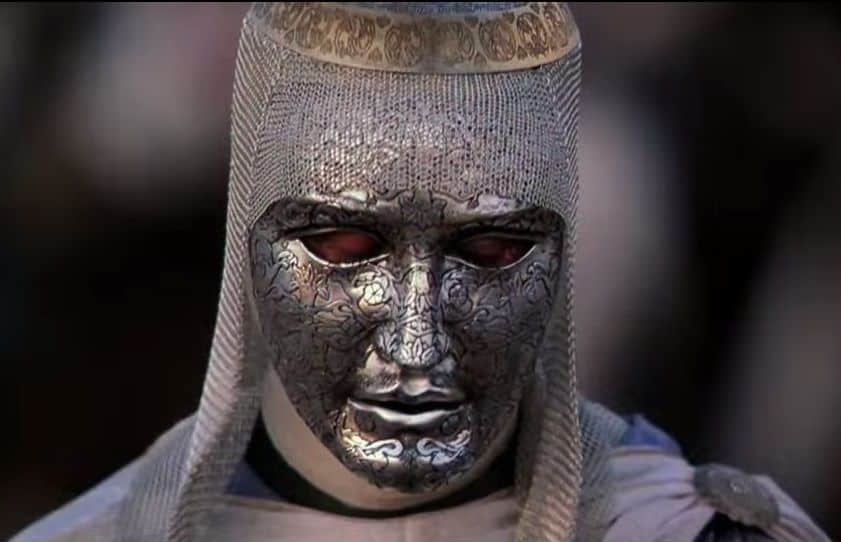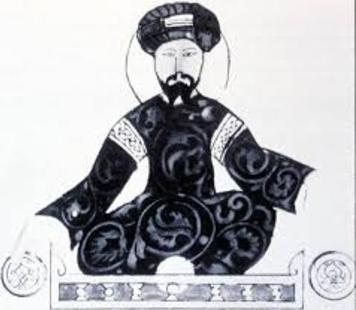Last updated on December 10th, 2024 at 11:51 pm
Baldwin IV of Jerusalem was one of the most interesting and tragic figures of the 12th century. Born in 1161 and diagnosed with Leprosy at age nine, Baldwin IV became king of Jerusalem at thirteen when his father, Almaric, passed suddenly of dysentery.
Although he was a child, Baldwin was a brave and determined ruler who did his best to protect his kingdom from the advances of the Muslim armies.
But despite his efforts, Baldwin’s kingdom was slowly but surely infringed upon, and his condition deteriorated. His illness must have come as a terrible blow to the young king and should have impacted his short life, but it seems that Baldwin IV was determined to make the most of his time.
Despite his disease, he was never segregated from his people and continued to rule Jerusalem with wisdom and courage serving as an inspiration to his people. Nevertheless, Baldwin ruled until he died in 1185.
Baldwin IV’s Early Life
Baldwin IV was born in 1161, the son of Amalric, the Count of Jaffa and Ascalon, and his first wife, Agnes of Courtenay. Amalric and Agnes had two children together, Baldwin IV and Sibylla.
Shortly after, Almaric became the King of Jerusalem in 1163. When he was born, Jerusalem was under the rule of the Franks, crusaders who came from Western Europe.
Baldwin IV was trained and schooled as any other noble child of the time. His lineage came with the expectation to be a great warrior and leader like his ancestors before him.
Around nine years old, Amalric sent Baldwin to William of Tyre, who was his tutor, a historian, and eventually the archbishop of Tyre and one of the most educated men in the crusader states.
Under William’s tutelage, Baldwin learned about God, history, and warfare. During this time, William noted that Baldwin appeared to have no feeling in his right arm and hand.
Baldwin’s father, soon realizing the reason, kept the disease a secret from the public, fearing what would happen to him.

What Leprosy Meant in The Middle Ages
Leprosy, known to be caused by mycobacterium leprae, is an infectious disease that primarily affects the skin, mucous membranes, and nerves.
In the Middle Ages, leprosy was highly stigmatized, and society often segregated infected people from the general population for their entire lives.
Traditionally, the public thought of a leper as “unclean” and believed the disease to be a sexually-transmitted disease or a punishment for sins. There was a lot of misinformation about how victims contracted the disease. Many thought lepers were contagious and could spread the disease through touch or breathing the same air.
Despite the social and religious stigma, Baldwin IV took his diagnosis in stride and was able to overcome the negativity surrounding his condition.
Since the standard tropes of contracting the disease could not be applied to him, Baldwin’s experience with the disease was uncommon and primarily positive.
Baldwin IV’s Rise to the Throne
In 1174, Baldwin’s father, Amalric, died from dysentery while on a campaign in Egypt. At the time of his father’s death, Baldwin was only thirteen and should not have ascended the throne.
Typically, knights with his affliction were supposed to join the Knights of St. Lazarus. He did not join them due to a decision from the High Court of Jerusalem and was placed in the care of Raymond of Tripoli.
Raymond was a mighty baron in the crusader states, and at the time, Baldwin was not noticeably affected by his affliction. During the summer of 1176, Baldwin came of age and was ready to take his father’s place as the rightful king.
Baldwin, a capable leader, took the reins of the government from his regent and appointed his uncle Joscelyn of Edessa into a powerful position.
Although Baldwin had the support of his kingdom, he realized he would father no heirs and that his disease was slowly progressing.
To ensure the stability of the domain, Baldwin IV arranged for a dynastic marriage between his sister Sibylla and William of Montferrat, the heir to a powerful Italian family.
Unfortunately, William didn’t live long and passed suddenly in 1177, leaving Sibylla a widow and pregnant.
Baldwin’s Military Triumphs Cement Him as a Hero to His People
While the leper king dealt with these issues of state, Saladin, the sultan of Egypt and Syria, was busy uniting Muslim forces to drive the crusaders out of the Holy Land for good claiming jihad.

Still, Baldwin’s early reign was marked by military successes against the Muslims. In 1177, he recaptured the city of Ascalon from Saladin, a victory that restored southern Palestine to Christian control.
During this invasion, Baldwin, believed to be trapped in Ascalon, came from the rear of Saladin’s army and defeated him completely at Montgisard.
At 16, Baldwin IV was the main driving force in the campaign against Saladin, leading his army from the front. He was an effective leader and inspired those around him with courage in the face of adversity.
He led each battle, as a king was supposed to, and was able to rally the support of many prominent figures in his kingdom. Throughout his late teens to early twenties, Baldwin IV would repel multiple invasions by Saladin, even when the leper king was only using one hand to ride a horse and hold a sword, a fact he had gotten used to during his training.
Baldwin’s Mortality Was Imminent
Despite his determination and perseverance, Baldwin knew his time was limited, and he needed to secure the kingdom’s future. So, in 1180, Baldwin IV arranged for Sibylla to marry Guy de Lusignan for her second marriage.
Possibly sensing the desperation of his enemies, Saladin invaded for the third time, and Baldwin IV couldn’t ride a horse and remained on a litter. Still, he fought tooth and nail to repel Saladin’s forces again.
As his Leprosy worsened, Baldwin IV made Guy a regent, which proved to be a mistake.
Guy de Lusignan was an ineffective leader and often made decisions without consulting the leper king or anyone else in the kingdom, seeming to rebel against Baldwin’s rule.
With no heir and his health rapidly deteriorating, Baldwin IV needed to protect the throne and so appointed his nephew Baldwin V to the throne.
Meanwhile, Baldwin IV tried to solve the problem with Guy through the bishops, but he failed to find a solution in time. In the spring of 1185, he passed away at 24.
While Baldwin V did ascend the throne, he passed about a year later, and Guy still ascended the throne. Unfortunately, Saladin pounced on the Holy City, which soon fell to his army.
Baldwin IV Was Beloved by His People Until The End
Baldwin IV was an incredible king, especially considering all he went through in his short life. He faced multiple military invasions, coped with a debilitating disease, and was still able to be an effective leader of his people.
His people loved him and were saddened by his demise. He was a hero to them and is still remembered as one of the great crusader kings.
What may be more astonishing is that on five different occasions, Saladin’s more powerful forces tried to take over his kingdom, but he always kept the loyalty of his people and held them off.
People should highly respect him for that. If Baldwin IV were alive today, how do you think he would handle today’s society with his condition?
Leprosy was and is a very misunderstood disease. It is often seen as a death sentence, but with modern medicine, people can live long comfortable lives.
Baldwin IV was ahead of his time in many ways, and if he were alive today, he would continue to inspire those around him and not let his disease define him.


This is a wonderful history.
“Cruzada” es una película en la que actúan Orlando Bloom y Lian Neeson. Es muy buena y muy bonita. Me hace recordar la Jerusalén que visite a mis 33 años